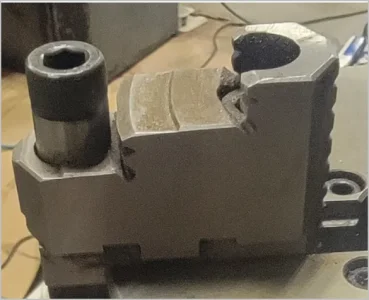I posted in one of the other threads about ROBRENZ truing his lathe chuck jaws.
MrCrispin does it an alternate way. I think it is wonderful when you have to very skilled guys do essentially the same thing different ways. This helps me at least to discover the important things and distinguish them from the less important things....
MrCrispin does it an alternate way. I think it is wonderful when you have to very skilled guys do essentially the same thing different ways. This helps me at least to discover the important things and distinguish them from the less important things....

